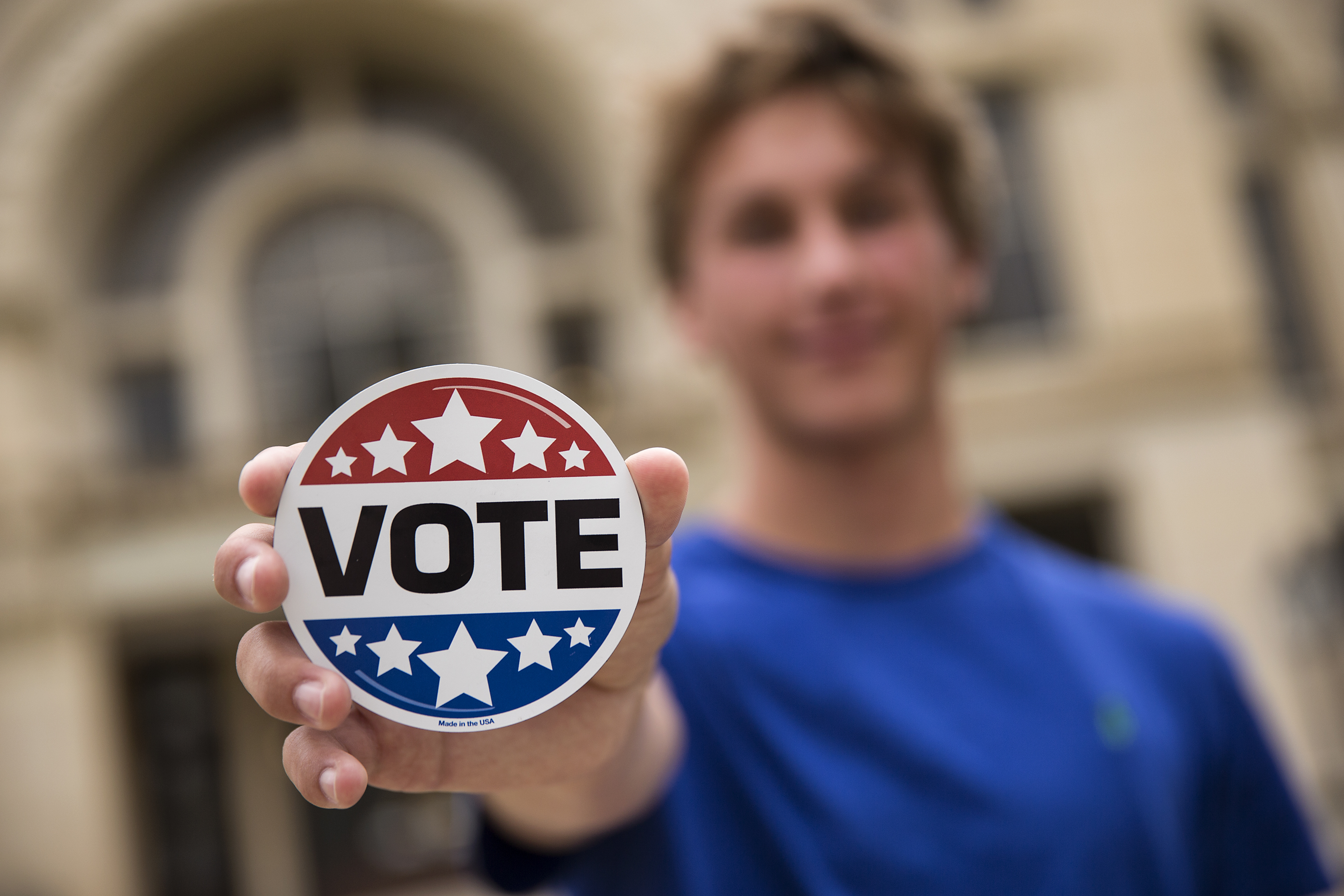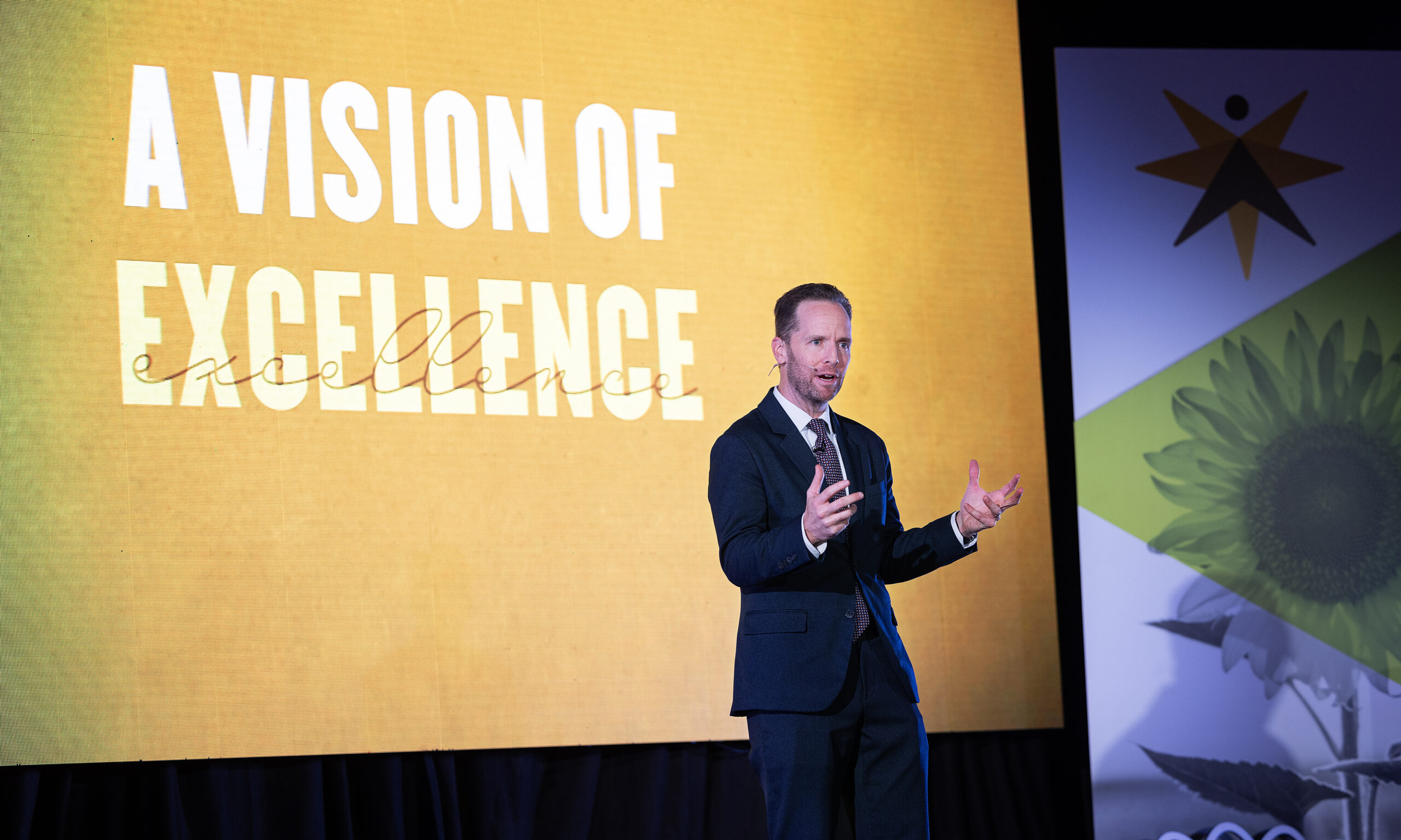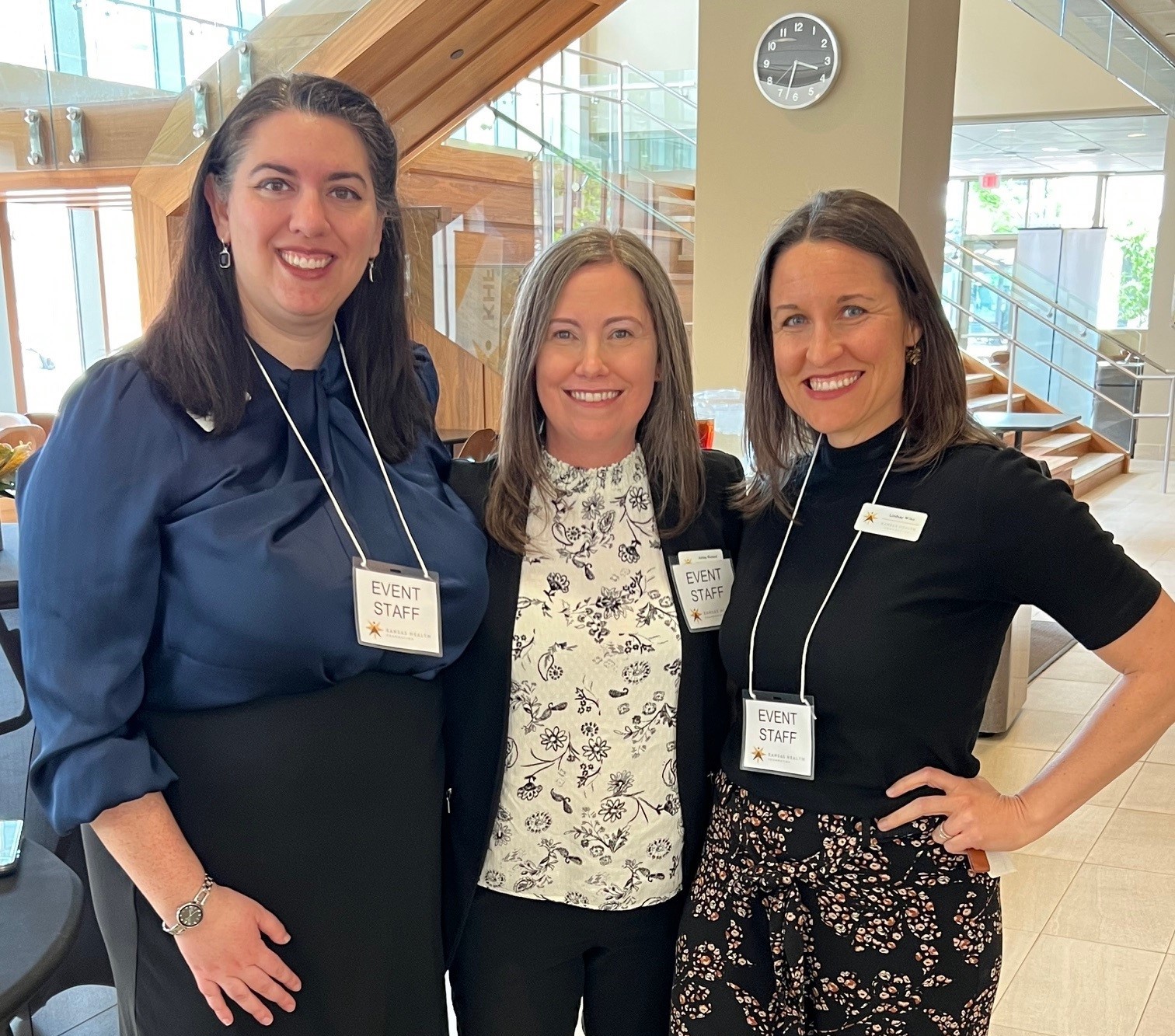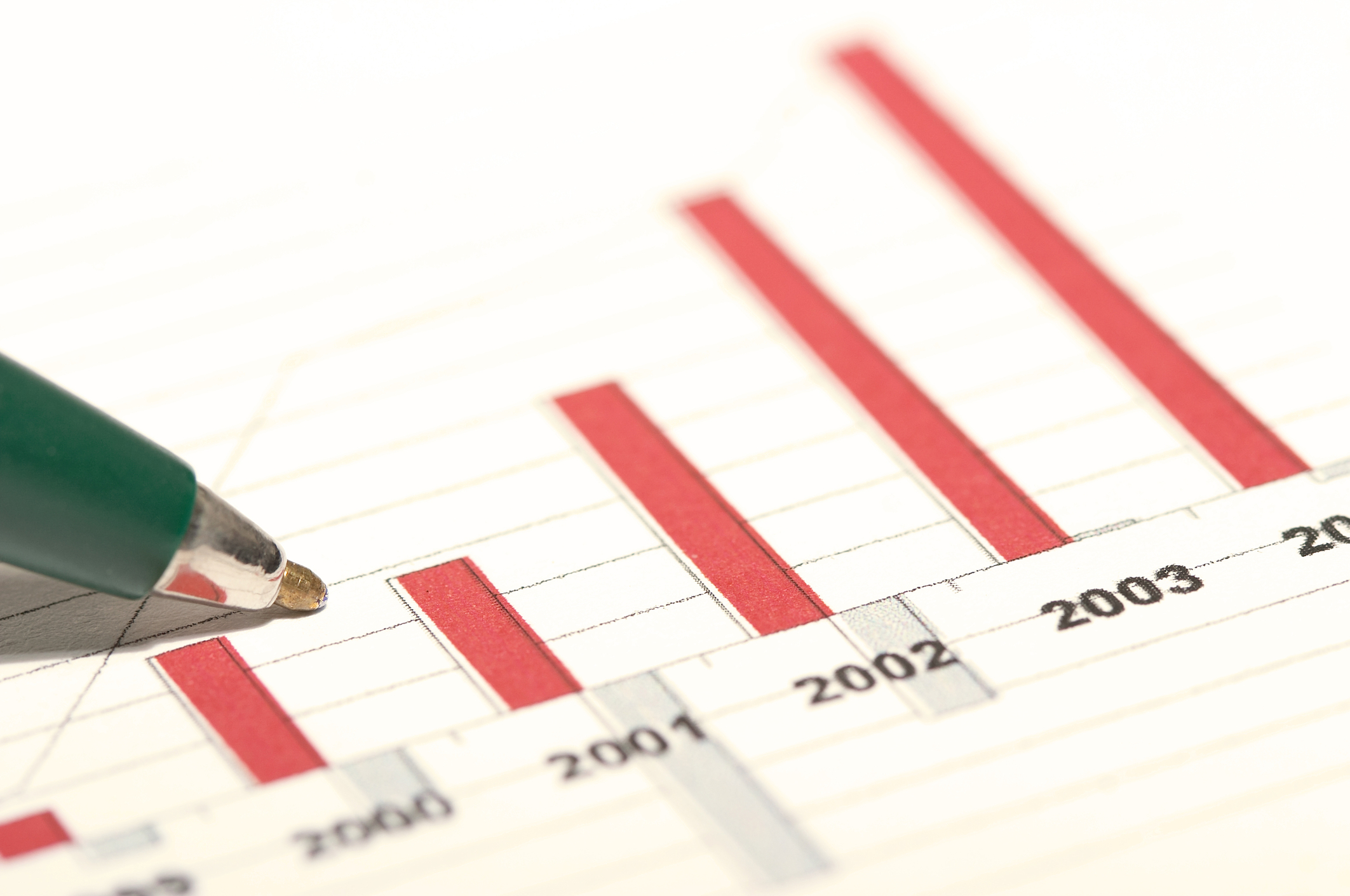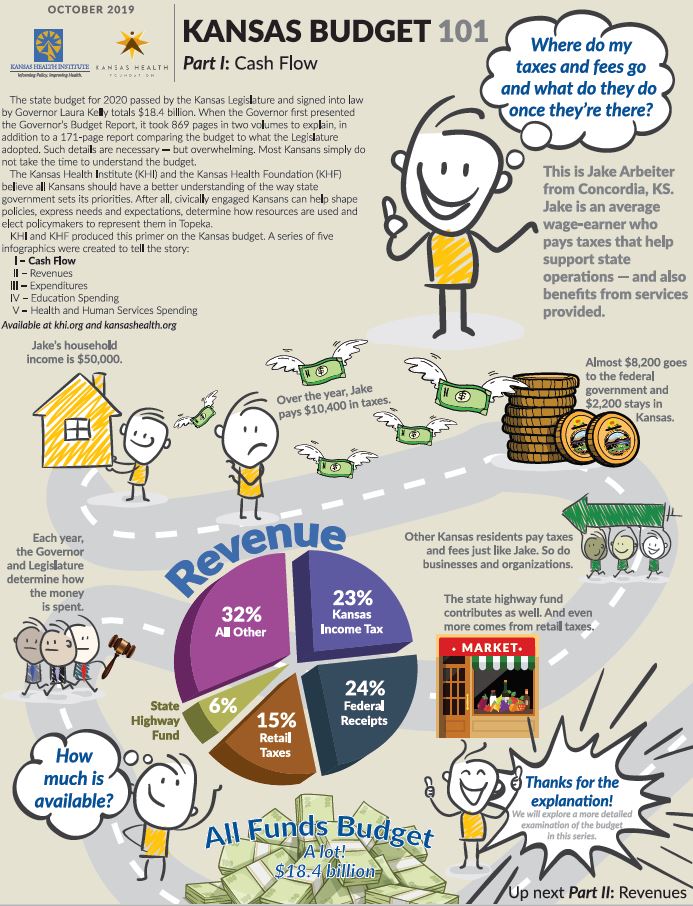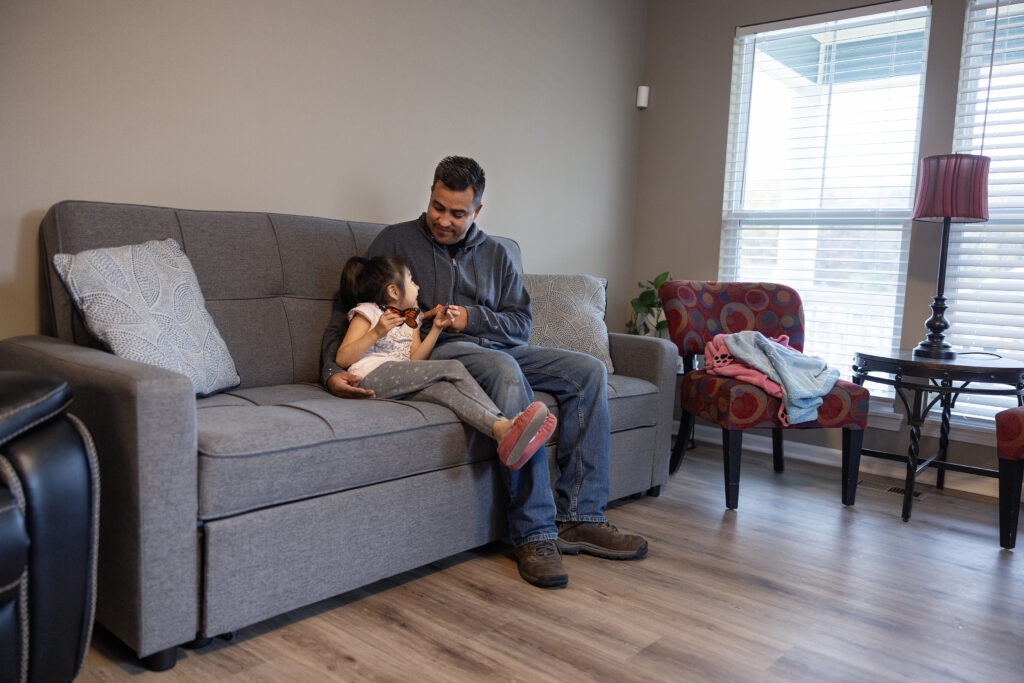For most Kansans, we trust the work of government to our elected representatives at the local, state and federal levels. These public servants make decisions that affect the health, safety and quality of life of our communities and state. They make decisions about how to use tax dollars entrusted to their care – connecting core services and priorities with the resources available to them.
However, even though those tax dollars are our tax dollars, many Kansans don’t really understand where they go, how priorities are set or how much is allocated to different programs.
As part of our continuing efforts to create greater civic engagement in Kansas, the Kansas Health Foundation (KHF) has partnered with the Kansas Health Institute (KHI) to create a guide to understand our state budget process. “Kansas Budget 101” provides a high-level overview of the revenues and expenditures that make up the $18.4 billion 2020 Kansas state budget.
“We realize how important state policies and the state budget process are for programs that affect the health of Kansans and our communities,” said Mike Lennen, KHF interim president and CEO. “Nearly 80 percent of the annual budget is allocated to programs in human services or for education – both which are major factors contributing to healthy outcomes.”
Through an intensive review of the 869-page Governor’s 2020 Budget Report, and the 171-page report of what the 2019 Legislature adopted, KHI was able to create a series of infographics to help Kansans better understand the state budget.
“This was certainly a different and exciting project for our team,” said Robert St. Peter, M.D., KHI president and CEO. “Whenever we can take complex, hard-to-find information and translate it into something more understandable, we are expanding the audiences who can be involved in meaningful policy discussions.”
The infographics follow a fictional Kansan, Jake Arbeiter, in showing where his tax dollars go and how those flow into the state revenues. Other infographics provide a visual of the state’s major expenditures – or how the state spends its money. The two major funding functions of the state, human services and education, are then described in more detail. In addition, each infographic section has a backup explanation on the policy, budgeting guideline and how the Kansas Constitution provides for the budget work.
KHI has included a high-level description of some of the program costs within a budget function, such as human services, which includes a breakdown of expenditures for the Department of Children and Families (DCF), Department for Aging and Disability Services (KDADS) and Department of Health and Environment (KDHE).
“Our biggest challenge with the ‘Kansas Budget 101’ was to provide enough information to explain the core budgeting process without getting lost in a lot of detail in any one area,” said St. Peter. “We know that people appreciate their own household budgets and bills, so we tried to bring this multi-billion-dollar budget to that level of understanding.”
Civic engagement is a key impact area for KHF, with a focus on building stronger communities and encouraging Kansans to participate in the election process, contact elected officials or attend public meetings. Research shows individuals and groups experiencing poor health outcomes are less likely to vote or engage with their elected representatives. In 2018, only 56.4 percent of Kansans voted in the gubernatorial election, compared to 50.8 percent in 2014. And, according to the 2016 Kansas Civic Health Index, only 14.4 percent of Kansas adults visited a public official.
“We believe this provides a tool for both legislators and their community constituents to have more informed discussions about the budget process,” Lennen said. “When Kansans feel like they can engage with their elected officials, they can express needs and ideas and help shape policies for the issues they care about, like school funding and Medicaid expansion.”
Click here to view the “Kansas Budget 101” infographics described in this story.




